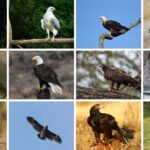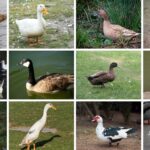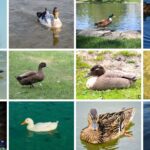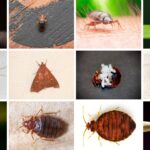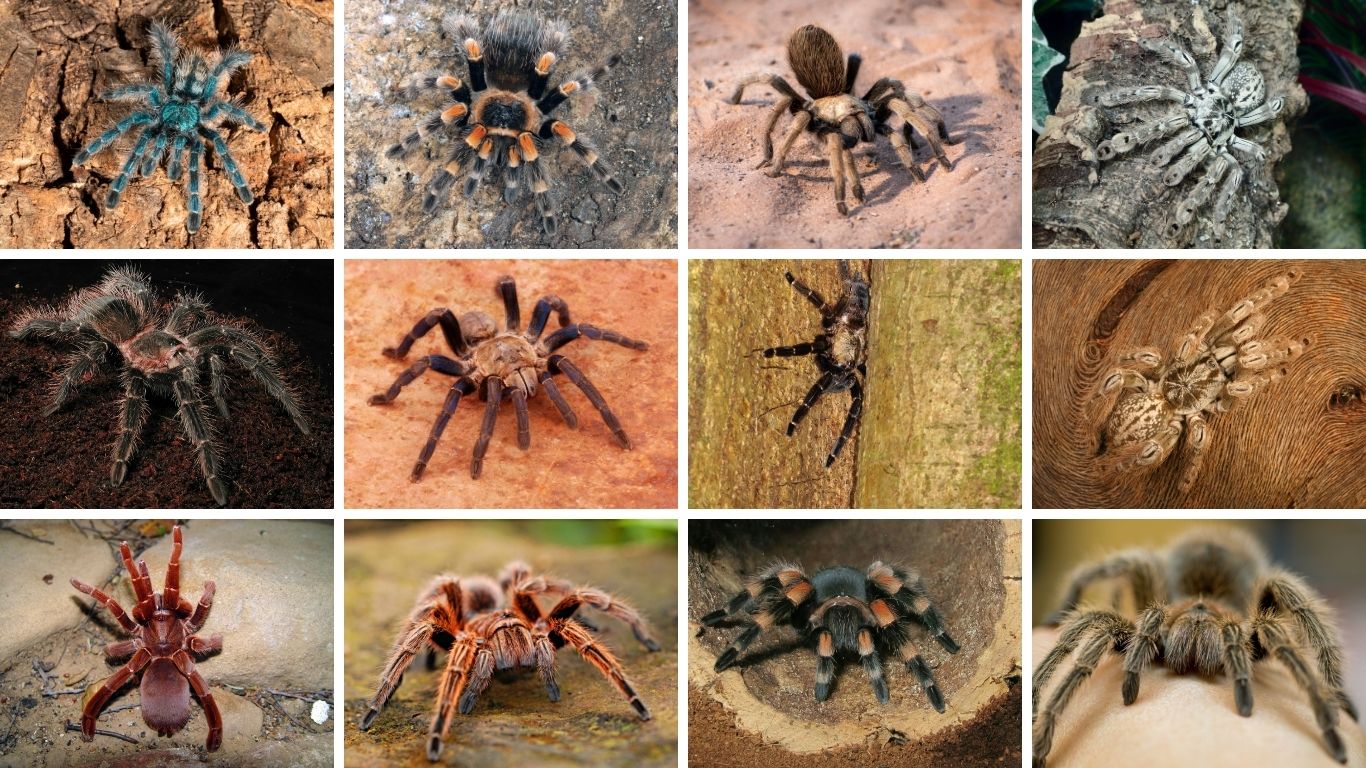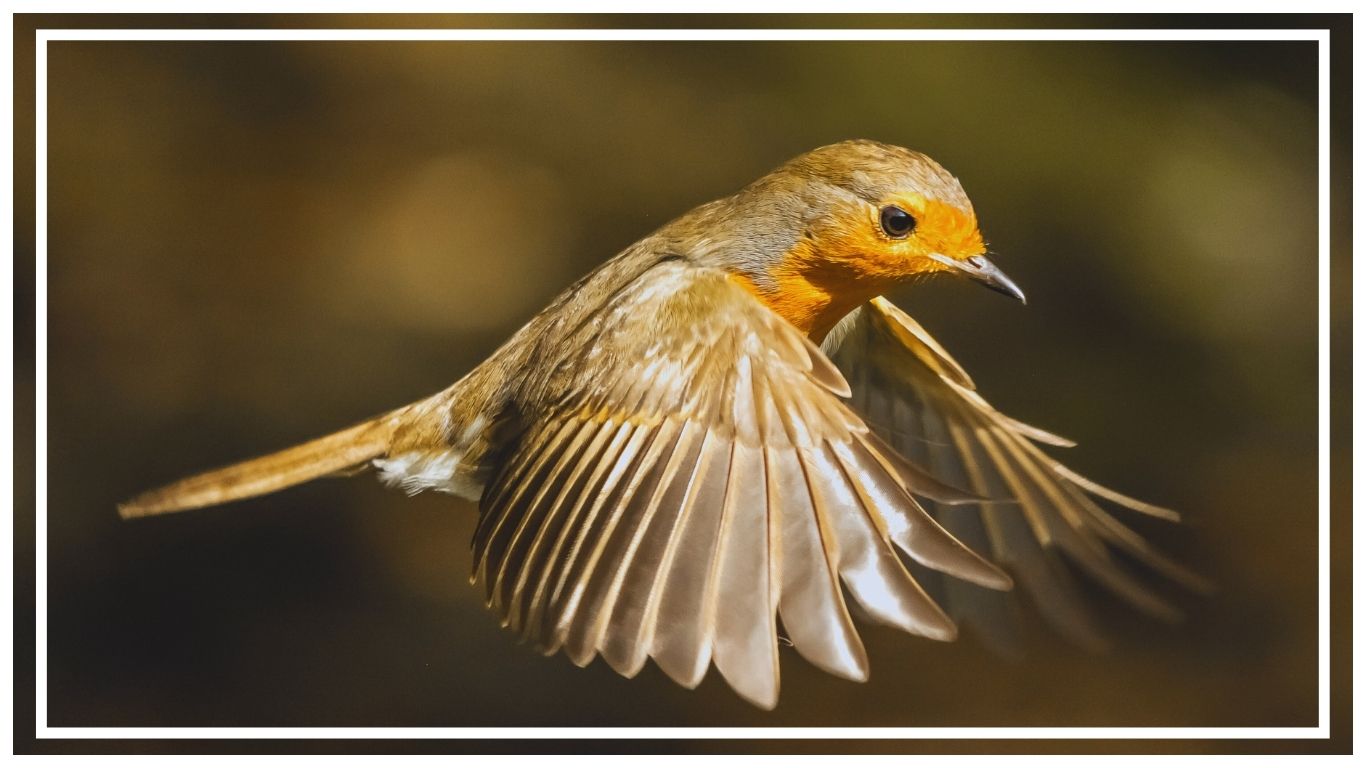Wolf spiders are quick, bold hunters that don’t wait in webs—they go after their prey. I’ve come across many while walking through fields or checking under rocks in the garden. Some are huge and hairy, others small and fast. Here are 15 types I’ve looked into, with details on how to spot them, where they live, and what their bites feel like.
1. Hogna carolinensis

Hogna carolinensis, commonly known as the Carolina wolf spider, is the largest wolf spider species in North America. Recognized by its robust body and striking eyeshine at night, this spider is both a skilled hunter and an essential part of the ecosystem. Though its appearance may seem intimidating, it typically avoids humans and delivers a bite only when provoked.
Identification
- Body length ranges from 18 to 35 mm (females are larger than males)
- Coloration is mostly brown with a lighter midline stripe on the cephalothorax
- Hairy body and legs, giving it a rugged appearance
- Distinctive eye arrangement: four small eyes in front, two large central eyes above, and two medium eyes behind
- Legs are strong and spiny, aiding in fast movement
- Often confused with tarantulas due to its size and color, but lacks tarantula fangs and silk-spinning patterns
Bites
Hogna carolinensis rarely bites unless threatened or handled roughly. Its bite is not medically significant for most people, though the large fangs can cause a sharp pinch.
Bite Symptoms
- Initial sharp pain or pinching sensation
- Mild swelling or redness around the bite area
- Itching or slight warmth
- Rarely, headaches or nausea in sensitive individuals
Habitat
This species is found in a variety of dry, open habitats across North America. It prefers areas with loose soil where it can dig burrows—often under rocks, logs, or in grassy fields. Unlike web-building spiders, it hunts at night and uses its speed and stealth to capture prey.
2. Hogna lenta

Hogna lenta is a medium-sized wolf spider native to the eastern and central United States. It is commonly seen in forests and grassy areas and is known for its stealthy, ground-hunting behavior. Despite its somewhat fierce look, it is harmless to humans and beneficial for natural pest control.
Identification
- Adult body length ranges from 13 to 25 mm
- Brown to gray coloration with faint darker markings
- Carapace may have a pale central stripe
- Legs are long and spiny, aiding in quick movement
- Eye pattern follows the typical wolf spider layout with prominent large central eyes
- Less hairy than Hogna carolinensis, with a more slender build
Bites
Bites from Hogna lenta are rare and usually occur when the spider is trapped or disturbed. They are not dangerous to humans and typically result in only mild discomfort.
Bite Symptoms
- Localized pain or pressure
- Minor swelling and redness
- Temporary itching or irritation
- Symptoms usually subside within a few hours to a day
Habitat
Hogna lenta favors leaf litter, wooded areas, and grassy fields. It does not build webs but shelters in natural debris or under logs and rocks. It hunts insects and other small arthropods primarily at night.
3. Hogna aspersa
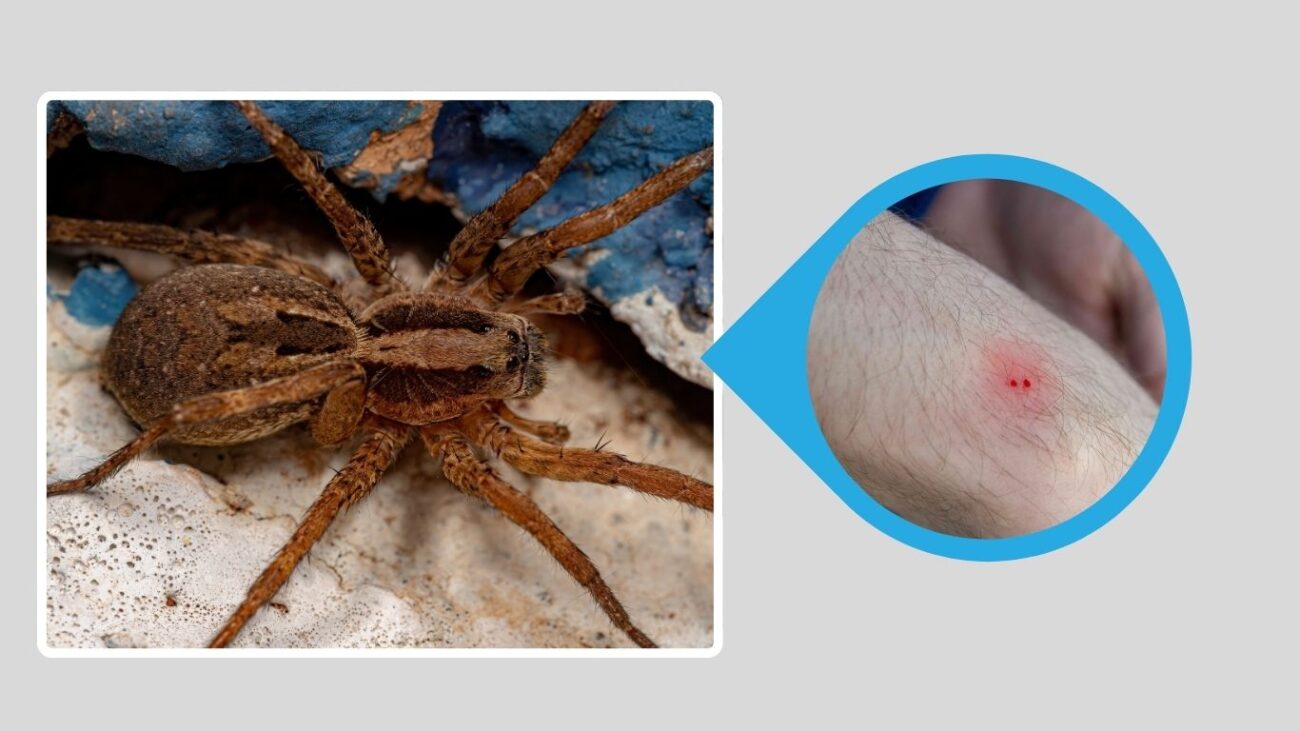
Hogna aspersa is another ground-dwelling wolf spider found primarily in the southern United States. It is slightly smaller than its relatives but shares similar hunting habits. Often active at night, this spider helps control insect populations in gardens and fields.
Identification
- Body length typically ranges from 10 to 20 mm
- Dull grayish-brown body with subtle patterning
- Lighter stripe may run down the center of the cephalothorax
- Legs are moderately long, banded, and slightly hairy
- Eye arrangement typical of wolf spiders, with two large middle eyes
- Compact body compared to other Hogna species
Bites
Hogna aspersa is shy and will flee rather than bite. Bites are extremely rare and usually occur when the spider is accidentally pressed or threatened.
Bite Symptoms
- Mild stinging sensation
- Slight swelling or localized redness
- Symptoms fade quickly and are not dangerous
- No long-term effects reported
Habitat
This species inhabits sandy soils, grasslands, and woodland edges. It prefers warm climates and is most often seen in southern states. Like other wolf spiders, it does not spin webs but uses its agility and vision to stalk prey.
4. Hogna baltimoriana

Hogna baltimoriana is a lesser-known species of wolf spider that ranges across parts of North America. It tends to stay hidden in natural debris and shows up more frequently in the cooler seasons. Though not as large as some of its relatives, it is an effective nocturnal predator.
Identification
- Adult body size ranges from 10 to 18 mm
- Brown or tan coloration with faint darker markings
- Pale stripe often visible down the center of the carapace
- Legs are thin, slightly banded, and covered in fine hairs
- Characteristic wolf spider eye arrangement with two large central eyes
- Slimmer body compared to other Hogna species
Bites
Bites from Hogna baltimoriana are very rare. This spider is non-aggressive and avoids human contact whenever possible. Bites typically occur only through direct handling.
Bite Symptoms
- Mild pain similar to a bee sting
- Redness and slight swelling at the bite site
- Temporary irritation or itching
- Symptoms generally resolve within 24–48 hours
Habitat
This species is commonly found in leaf litter, grassy areas, and under stones in forests or meadows. It thrives in cooler, temperate zones and is more active during dusk and nighttime.
5. Hogna antelucana
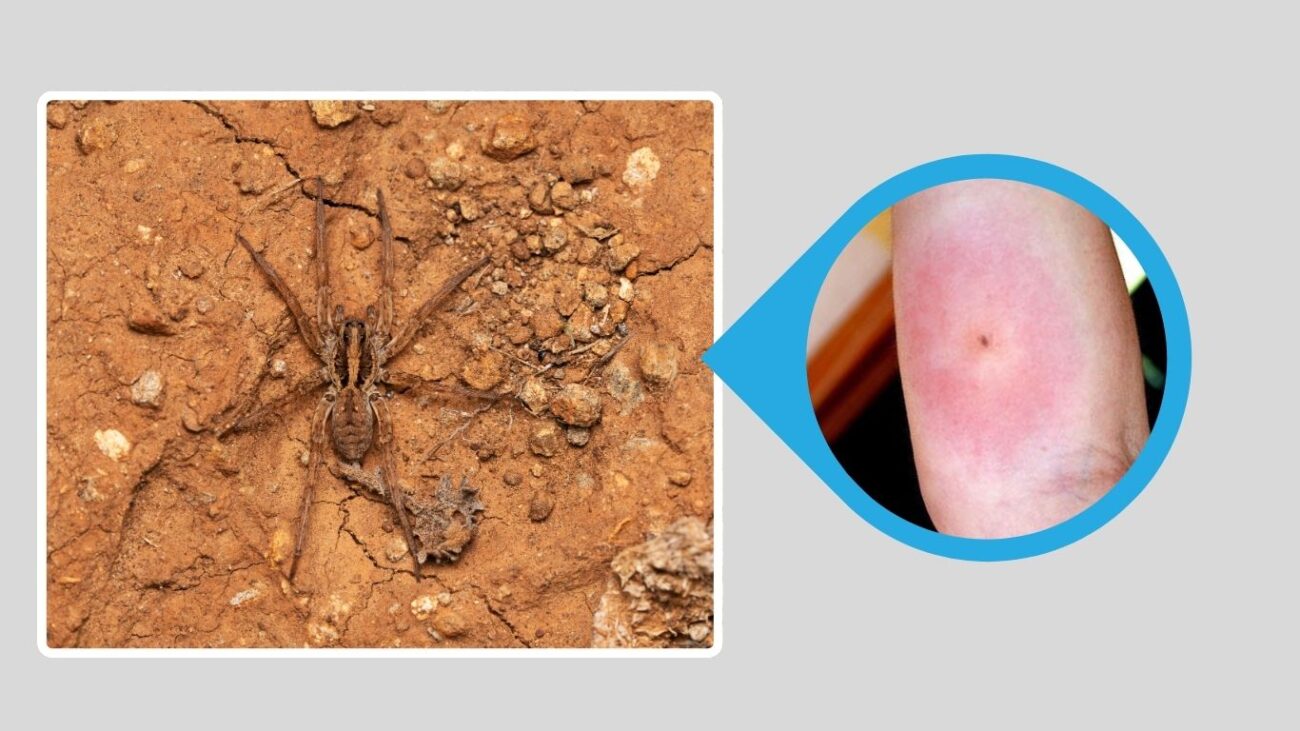
Hogna antelucana is a large wolf spider species primarily found in the southern United States. It is often seen wandering across open ground at night in search of prey. Like other wolf spiders, it doesn’t rely on a web to catch food.
Identification
- Body size can range from 15 to 30 mm
- Dark brown to grayish body with muted striping
- Carapace usually has a narrow pale central stripe
- Legs are robust and slightly banded, with fine hairs
- Distinctive eye pattern typical of the Lycosidae family
- Females are generally bulkier than males
Bites
This spider is usually calm and prefers to escape rather than engage. Its bite is not considered medically dangerous but may be painful due to its size.
Bite Symptoms
- Sharp initial sting or pinch
- Swelling and redness around the bite site
- Itching or burning may follow
- Symptoms typically disappear within a few days
Habitat
Hogna antelucana is commonly found in fields, prairies, and sandy areas, particularly in warmer regions. It prefers open spaces where it can actively hunt and may burrow or take cover under natural objects during the day.
6. Lycosa tarantula
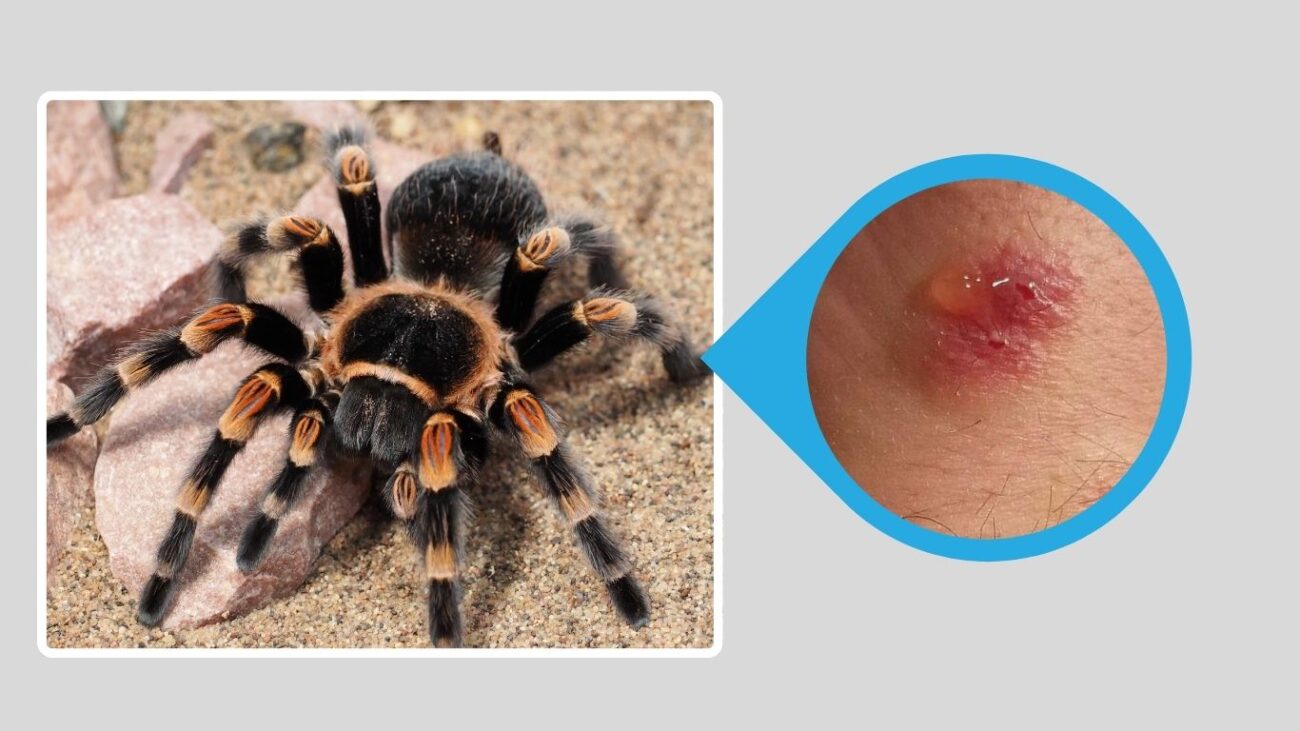
Lycosa tarantula, also known as the European tarantula or tarantula wolf spider, is native to southern Europe. It’s one of the largest wolf spiders in Europe and was historically associated with the tarantella dance, stemming from old myths about its bite.
Identification
- Adult size ranges from 25 to 30 mm in body length
- Dark brown to gray coloring with lighter stripes on the cephalothorax
- Abdomen may have faint spotting or patterns
- Large, hairy body and legs
- Distinct wolf spider eye pattern with two prominent central eyes
- Females are larger and bulkier than males
Bites
Although the name may sound intimidating, Lycosa tarantula’s bite is not medically dangerous. It only bites when provoked, and the effects are mild.
Bite Symptoms
- Pain comparable to a bee sting
- Localized swelling and redness
- Occasionally mild nausea or fatigue
- Symptoms usually disappear in 1 to 2 days
Habitat
This species prefers warm, dry habitats such as grasslands, scrublands, and Mediterranean fields. It digs deep burrows and often seals the entrance with silk. It’s a nocturnal hunter and avoids contact with humans.
7. Trochosa ruricola
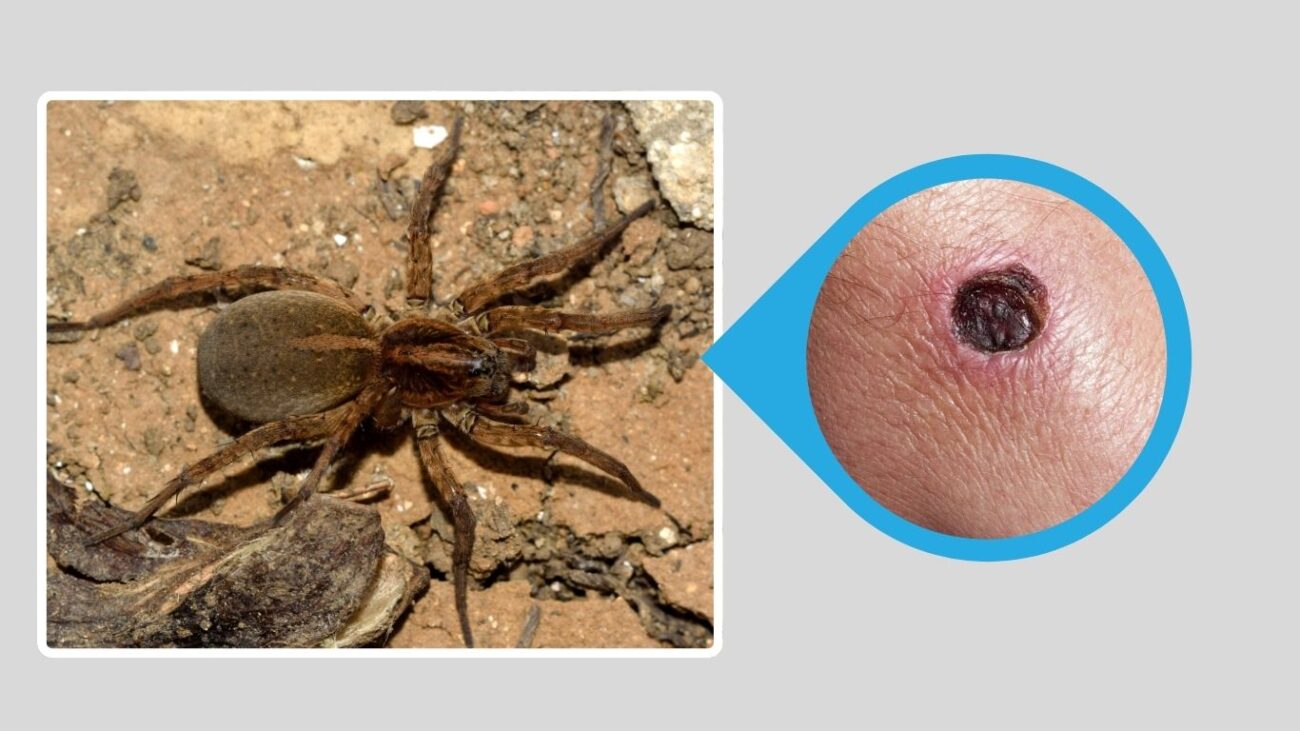
Trochosa ruricola, commonly called the rustic wolf spider, is widespread across Europe and North America. It is often found in gardens, fields, and near homes, making it one of the more commonly encountered wolf spiders.
Identification
- Body length ranges from 7 to 14 mm
- Dark brown or reddish-brown body with a lighter median stripe
- Shorter, more compact legs compared to other wolf spiders
- Less hairy appearance than larger Hogna species
- Wolf spider eye pattern with large central eyes
- Females carry egg sacs attached to their spinnerets
Bites
Trochosa ruricola is timid and non-aggressive. Bites are extremely rare and occur only through accidental handling.
Bite Symptoms
- Slight discomfort or tingling
- Minimal swelling or redness
- Symptoms subside quickly, typically within hours
- No severe reactions reported
Habitat
This species is adaptable and lives in grasslands, gardens, and forest edges. It hides under logs, stones, and leaf litter during the day. Unlike many wolf spiders, it is sometimes active during daylight hours, especially in shaded areas.
8. Pardosa milvina

Pardosa milvina is a small, agile wolf spider commonly found in the United States, especially in agricultural fields and grassy habitats. Known for its quick movements and effective pest control, it plays a vital role in the ecosystem.
Identification
- Adult size ranges from 4 to 8 mm
- Brown to gray body with subtle dark markings
- Narrow pale stripe down the cephalothorax
- Legs are long, thin, and banded with fine hairs
- Standard wolf spider eye pattern with two large middle eyes
- Males are typically smaller and have more slender bodies
Bites
Due to its small size and timid nature, Pardosa milvina rarely bites humans. It poses no threat and is more likely to flee than defend.
Bite Symptoms
- Mild or unnoticeable pain
- Slight redness or irritation in rare cases
- Symptoms, if any, resolve within a few hours
- No lasting effects
Habitat
This species thrives in open habitats like grasslands, crop fields, and wetlands. It does not spin webs and instead hunts during the day, making it a diurnal predator—unusual among wolf spiders.
9. Pardosa agrestis

Pardosa agrestis is another small wolf spider species often seen in agricultural regions across Europe and parts of Asia. It is known for its beneficial role in pest control, especially in crop systems.
Identification
- Adult body length ranges from 5 to 9 mm
- Dark brown body with lighter markings
- Legs are banded and moderately hairy
- Slender appearance with long legs for its size
- Eye arrangement follows the typical wolf spider pattern
- Males have slightly darker coloration than females
Bites
Pardosa agrestis is non-aggressive and rarely bites. Its small fangs are unlikely to penetrate human skin effectively.
Bite Symptoms
- Rarely causes noticeable pain
- Minor redness or irritation may occur
- No medical treatment usually necessary
- Effects disappear within a few hours
Habitat
This spider prefers farmland, meadows, and grassy environments. It is particularly common in wheat and barley fields. Active mostly during the daytime, it hunts small insects on the ground and takes cover in vegetation when threatened.
10. Gladicosa gulosa
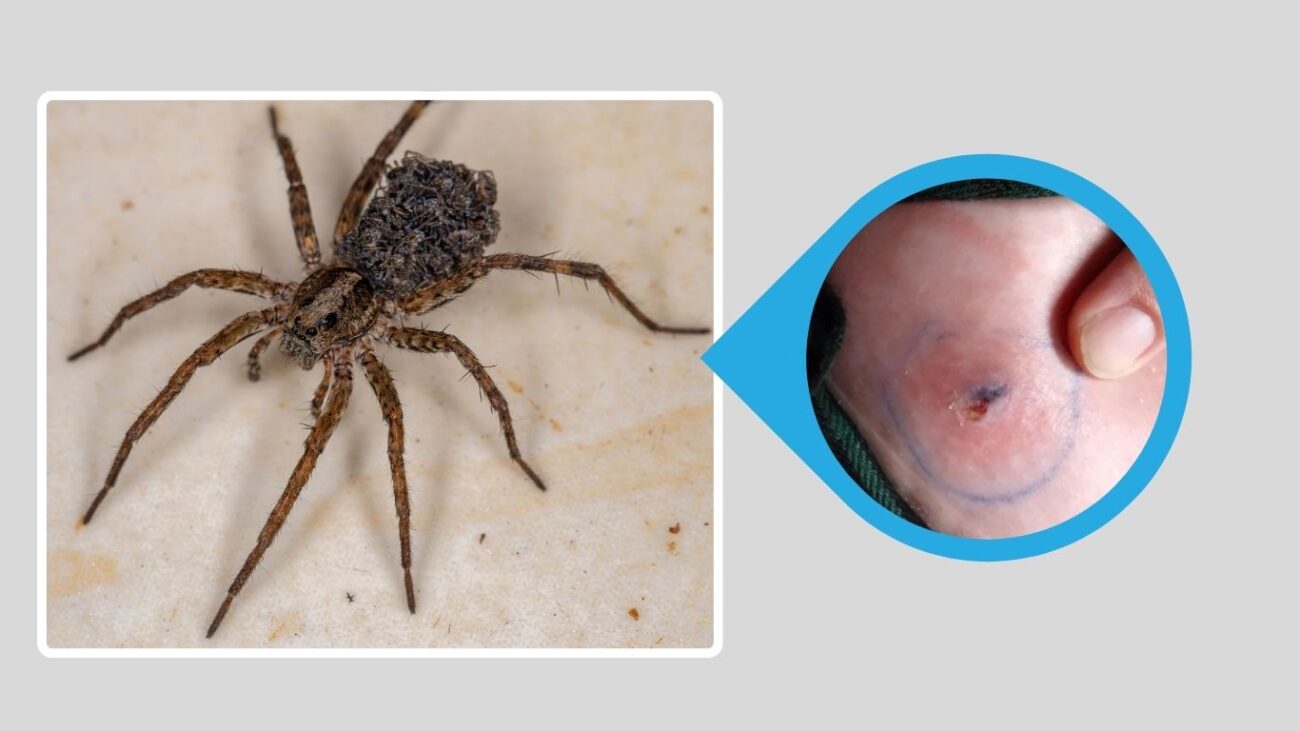
Gladicosa gulosa is a large, ground-dwelling wolf spider native to the eastern United States. Though not as widely known as some other species, it is a capable nocturnal predator often spotted in wooded environments.
Identification
- Body length ranges from 15 to 25 mm
- Dark brown or gray coloration with lighter central stripe on cephalothorax
- Abdomen is plump with subtle dark patterns
- Legs are thick and hairy with faint banding
- Prominent wolf spider eye layout with strong night vision
- Appears stockier than many Pardosa or Trochosa species
Bites
Gladicosa gulosa is generally docile and avoids contact with humans. Bites occur only when the spider is provoked or accidentally pressed.
Bite Symptoms
- Sharp, quick pain like a pinprick
- Redness and slight swelling
- Minor itching or discomfort
- Symptoms resolve within a day or two
Habitat
This species prefers moist, forested habitats with lots of leaf litter. It does not build webs and instead shelters under logs and rocks during the day. It emerges at night to hunt beetles, crickets, and other small invertebrates.
11. Arctosa littoralis

Arctosa littoralis is a shoreline-dwelling wolf spider that thrives in sandy or coastal environments. Unlike most wolf spiders, it is adapted to life near water, making it quite unique among its relatives.
Identification
- Adult size ranges from 10 to 15 mm
- Sandy brown body with irregular dark markings
- Flattened body shape suited for burrowing
- Legs are long, slightly spiny, and well-camouflaged
- Eye pattern typical of Lycosidae family
- Often mistaken for grains of sand when still
Bites
This species is not aggressive and rarely bites. It is more likely to flee quickly into sand or burrows when approached.
Bite Symptoms
- Mild stinging sensation
- Slight skin irritation or redness
- No long-term effects or serious reactions
- Symptoms fade within 12–24 hours
Habitat
Arctosa littoralis is typically found along riverbanks, lakeshores, and coastal dunes. It builds shallow burrows in sand and emerges to hunt at twilight. Its coloration makes it nearly invisible against its natural background, offering excellent camouflage from predators.
12. Rabidosa rabida
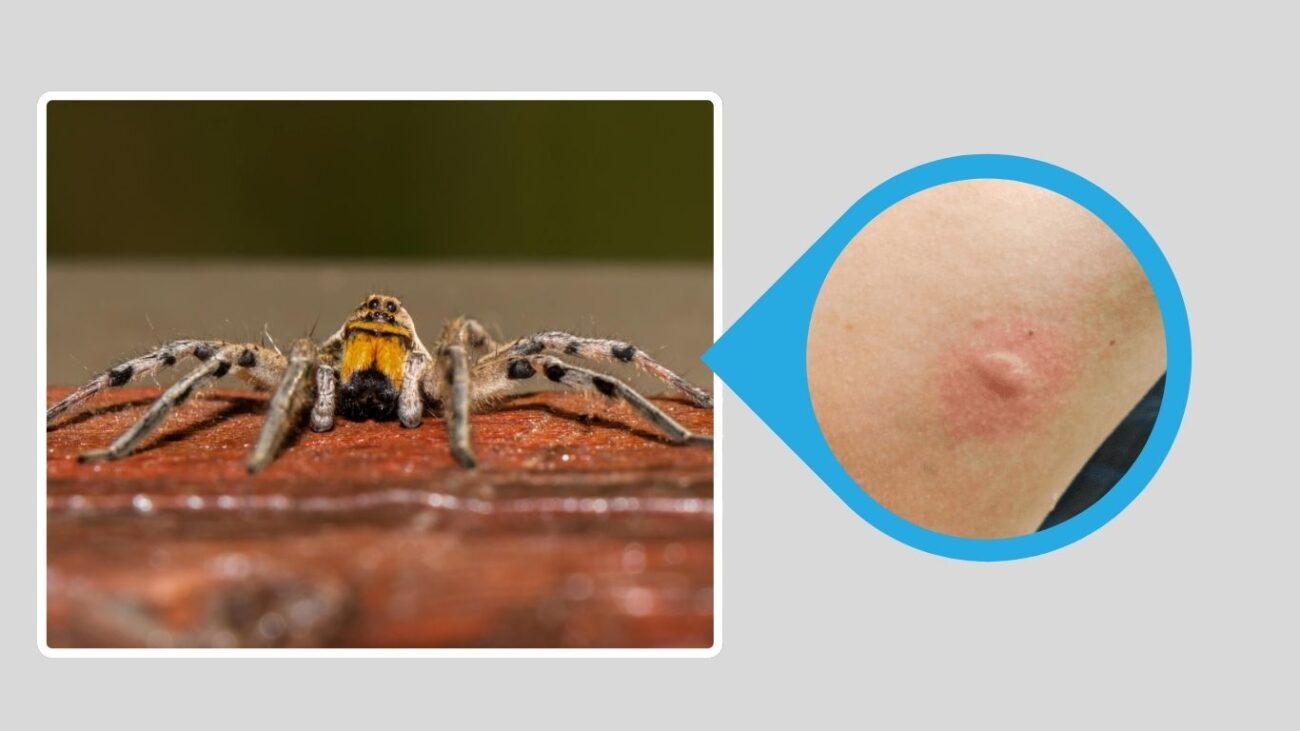
Rabidosa rabida, commonly known as the rabid wolf spider, is a fast-moving species often seen in open fields and grassy areas throughout the eastern and central United States. Its name comes from its erratic movements, not any association with disease.
Identification
- Adult body length ranges from 15 to 25 mm
- Tan to light brown with two bold dark stripes on the cephalothorax
- Abdomen has a central dark stripe flanked by lighter areas
- Legs are long, striped, and covered in fine hairs
- Prominent wolf spider eye arrangement with reflective central eyes
- Agile and noticeably fast runner when disturbed
Bites
Rabidosa rabida may bite if handled roughly, but it typically avoids humans. Its bite is not medically significant.
Bite Symptoms
- Moderate pain at the bite site
- Redness, mild swelling, and slight itching
- Rarely, brief fatigue or headache
- Symptoms subside within a day or two
Habitat
This species is commonly found in grasslands, fields, and roadside vegetation. It does not burrow but seeks cover under leaves or ground debris during the day and actively hunts at night or in the early morning.
13. Geolycosa missouriensis
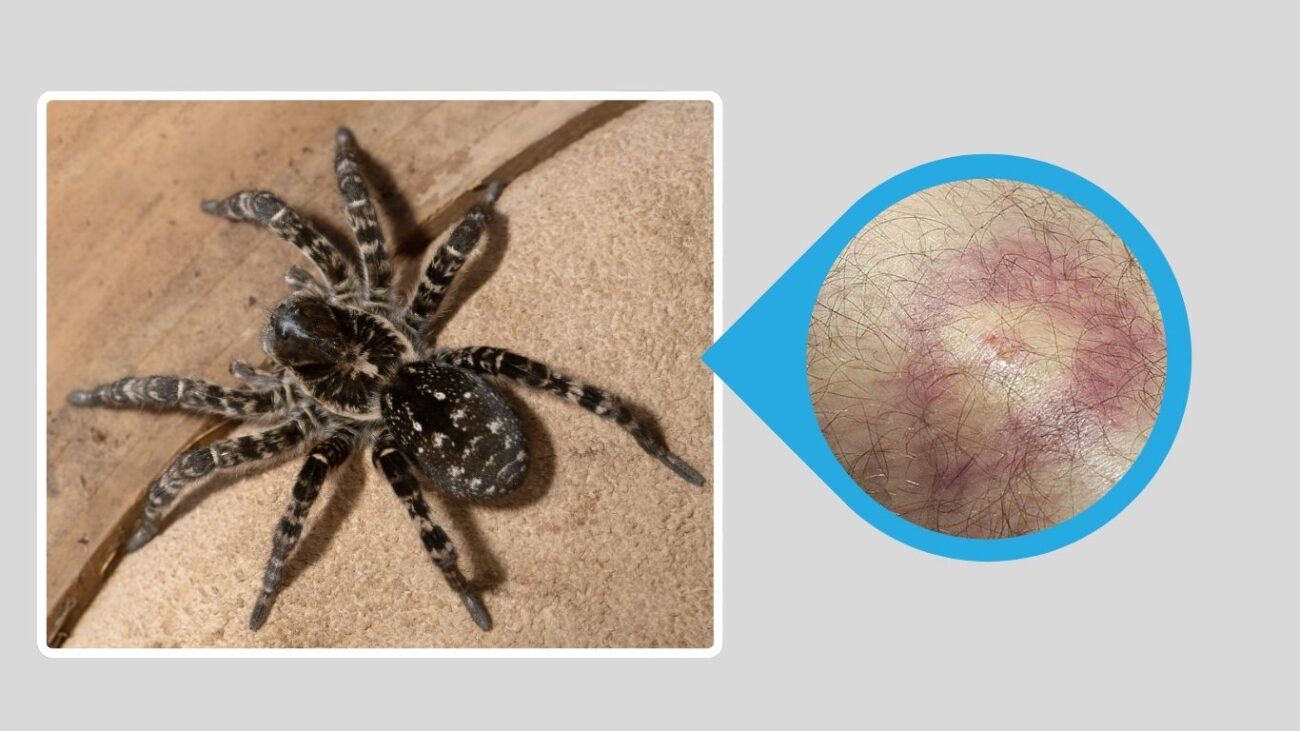
Geolycosa missouriensis is a burrowing wolf spider species native to central and western parts of the United States. It is notable for constructing vertical burrows in sandy or loose soils and rarely leaves them except to hunt or mate.
Identification
- Body size ranges from 10 to 20 mm
- Dull brown or gray body with minimal markings
- Stout, compact body with short, powerful legs
- Fine hairs cover the entire body, giving a dusty appearance
- Eyes adapted for low light within burrows
- Blends well with soil and sandy environments
Bites
This spider almost never bites due to its secretive nature and limited contact with people. Bites are rare and mild.
Bite Symptoms
- Slight pinching sensation
- Mild swelling or irritation if any
- Symptoms pass quickly, no medical treatment usually needed
Habitat
Geolycosa missouriensis lives in dry, open habitats with sandy or loose soil, where it digs burrows several inches deep. It waits near the entrance for passing prey and quickly retreats into its tunnel if disturbed. Its burrowing lifestyle makes it one of the most reclusive wolf spiders
14. Pirata sedentarius
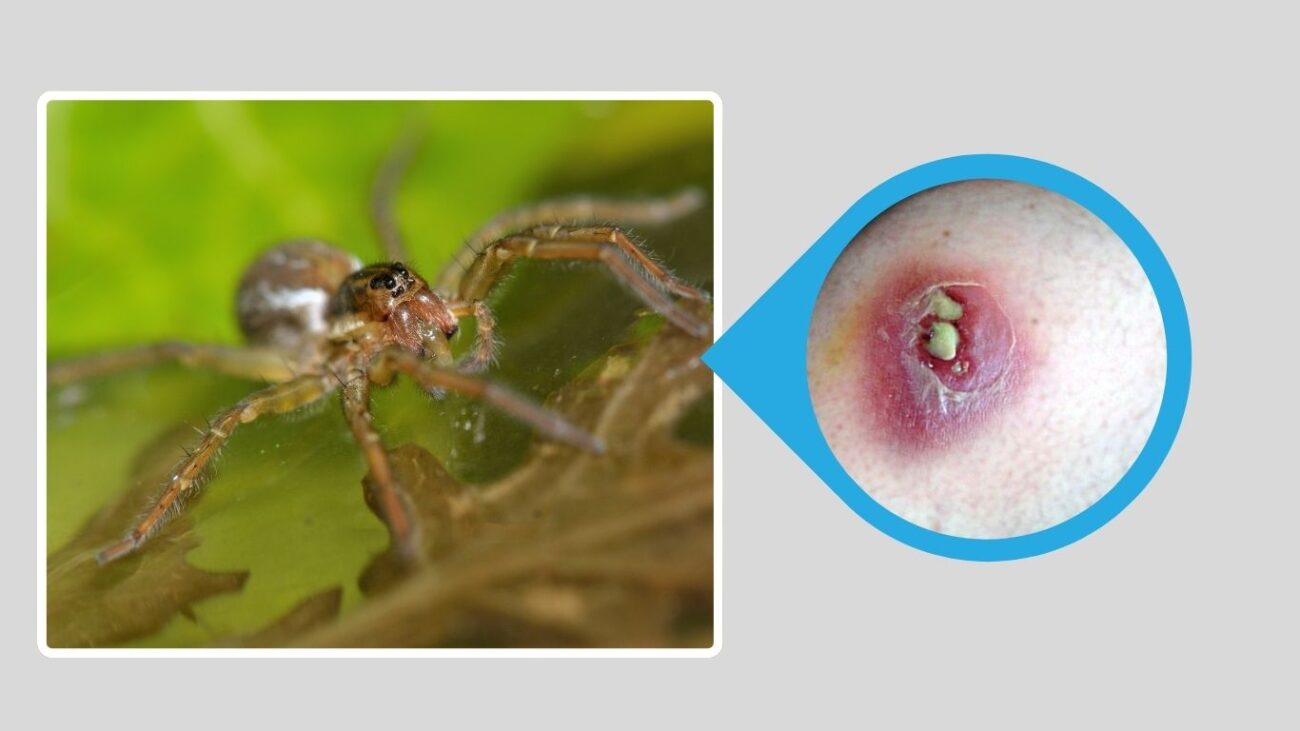
Pirata sedentarius is a small wolf spider typically found near water bodies such as ponds, marshes, and wet meadows across North America. It belongs to the genus Pirata, known for its association with moist environments.
Identification
- Adult body length ranges from 5 to 9 mm
- Dark brown or black body with lighter markings on the cephalothorax
- Abdomen has pale spots or lines
- Legs are long, slender, and faintly banded
- Less hairy than most ground-dwelling wolf spiders
- Eyes follow the standard wolf spider layout, with noticeable central pair
Bites
Bites from Pirata sedentarius are very rare due to its small size and secretive nature. It avoids contact with humans.
Bite Symptoms
- Barely noticeable sting
- Mild redness or irritation
- No significant swelling or lasting effects
- Heals quickly without treatment
Habitat
This species prefers wetlands, pond margins, and other damp areas. Unlike burrowing species, it hides in vegetation and under debris. It actively hunts small insects on the water’s edge and is occasionally seen walking on wet surfaces or floating debris.
15. Schizocosa ocreata

Schizocosa ocreata, known as the brush-legged wolf spider, is native to North America and is commonly found in wooded areas. Males are known for their unique courtship displays, using their dark bristles (“brushes”) on their forelegs to attract females.
Identification
- Adult body length: 6 to 12 mm
- Brown body with darker patterns, especially on the abdomen
- Males have distinctive black brushes on their front legs
- Legs are long and thin, often banded
- Prominent central eyes with good vision
- Generally small and agile compared to other wolf spiders
Bites
This species is shy and harmless. Bites are extremely rare and pose no health risks.
Bite Symptoms
- Minor local irritation
- Slight redness or a tingling sensation
- No severe reaction or long-lasting symptoms
- Disappears within a few hours
Habitat
Schizocosa ocreata is commonly found in forests, under leaves, logs, and within low vegetation. It is active mainly during spring and early summer. Males are often spotted performing mating dances on the forest floor during the breeding season.


